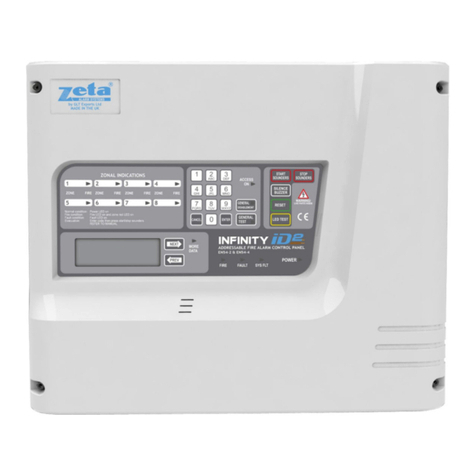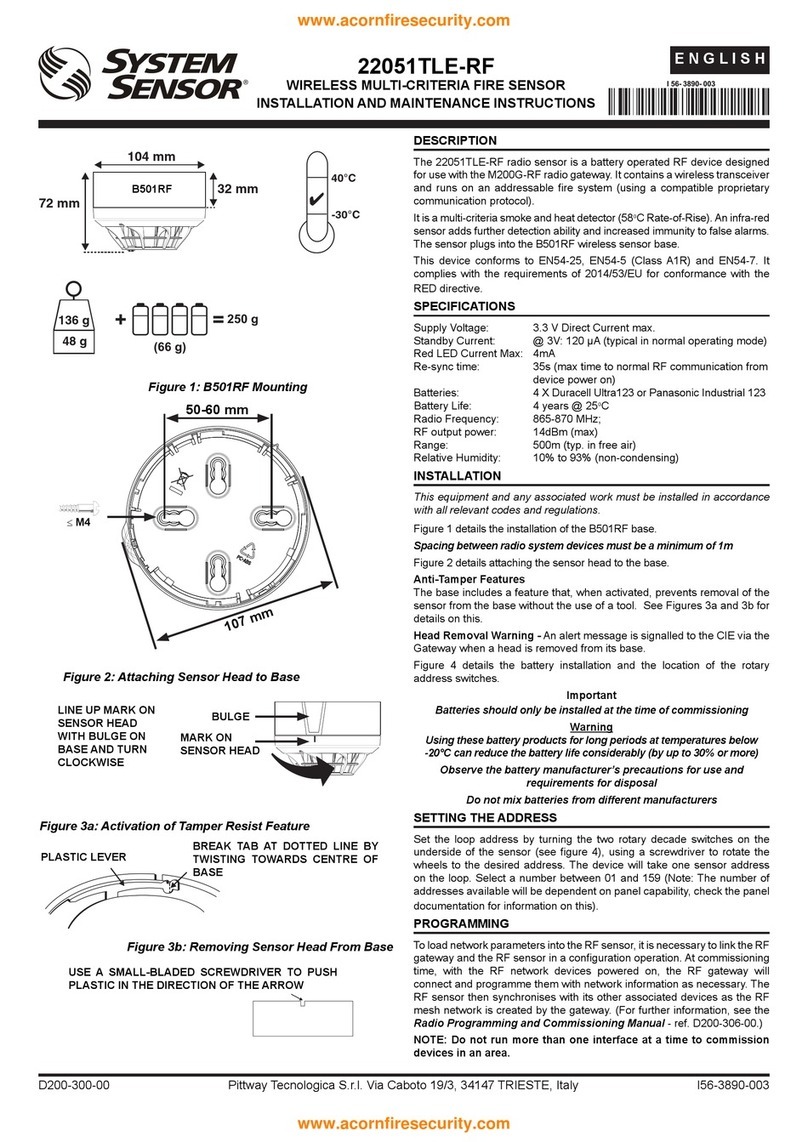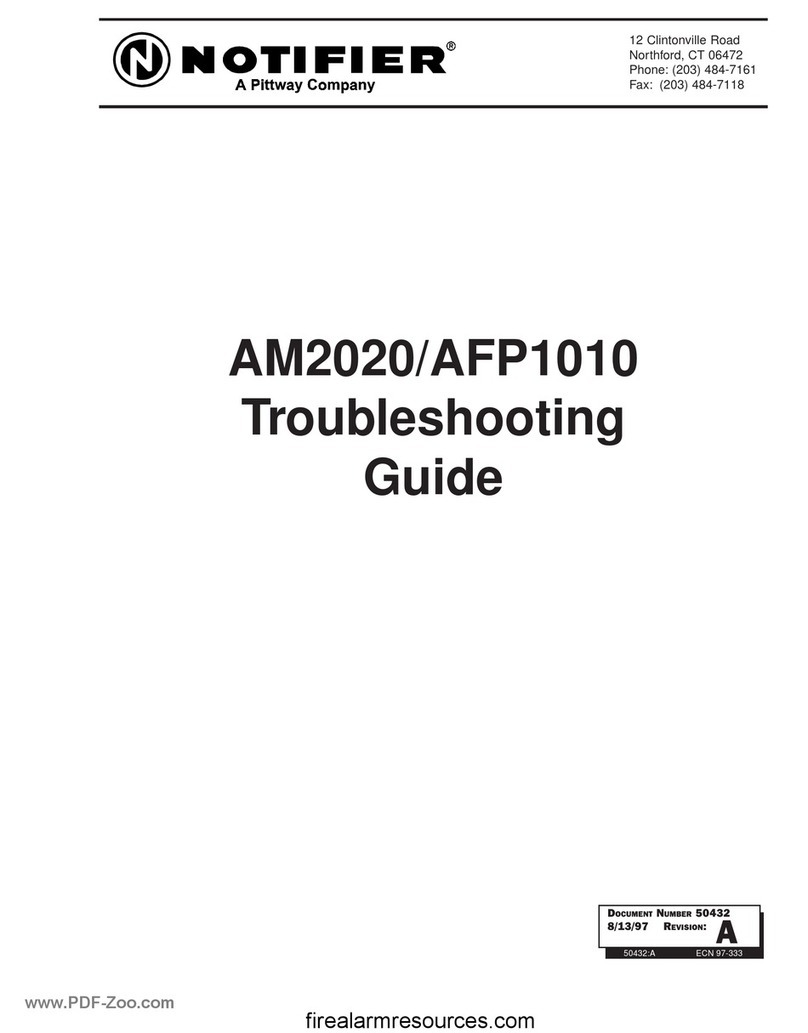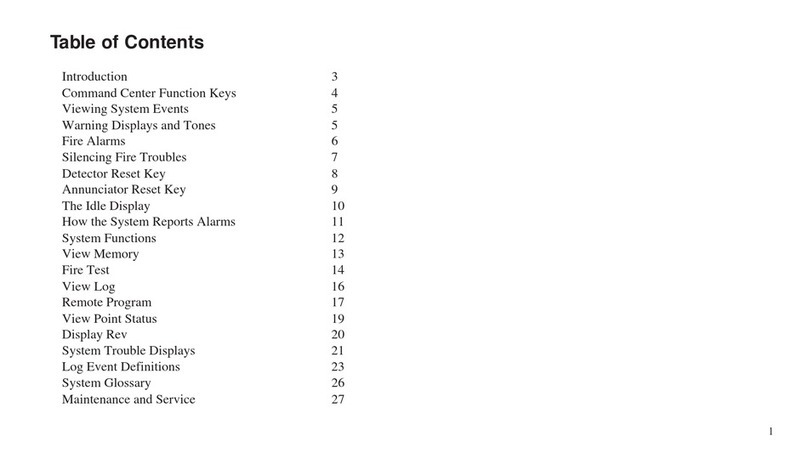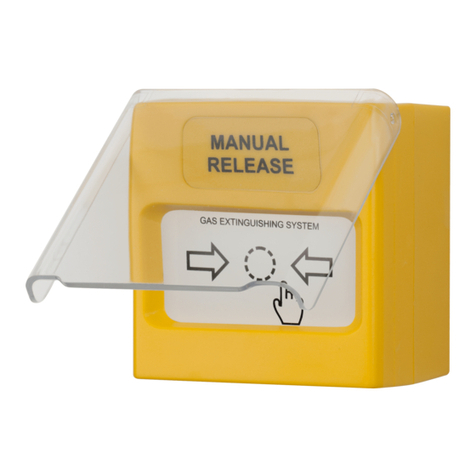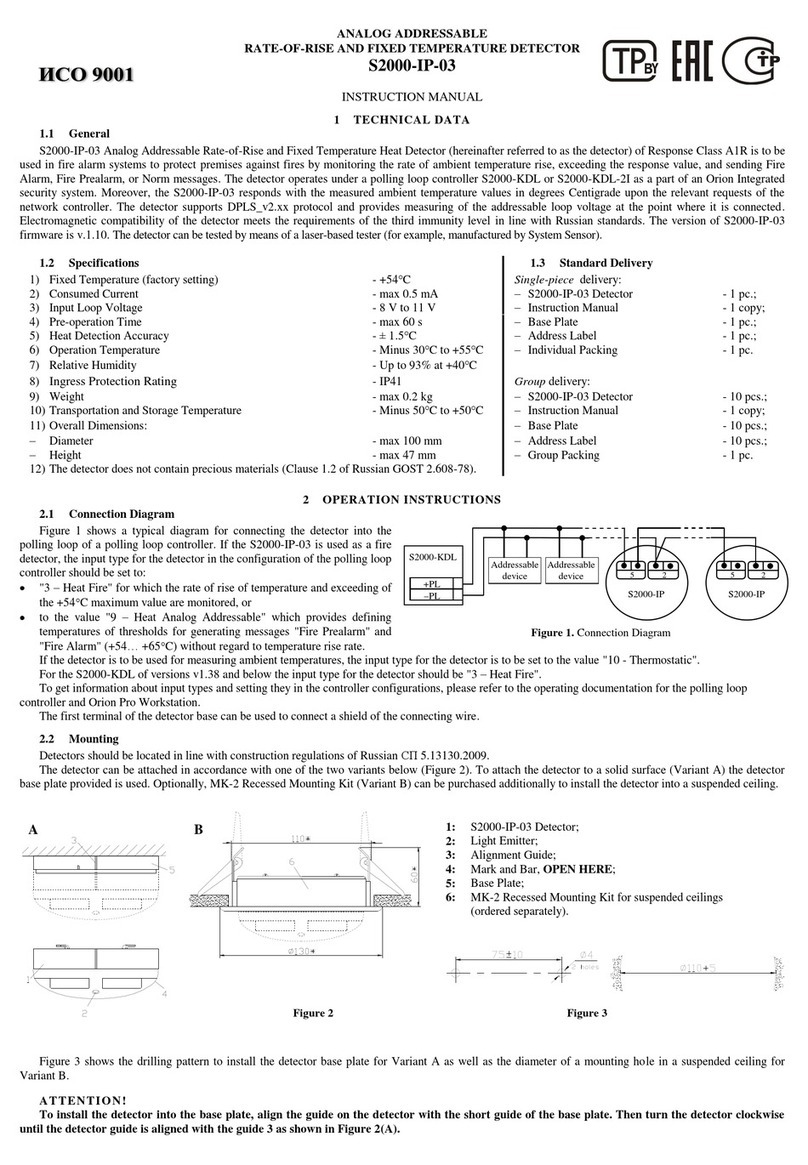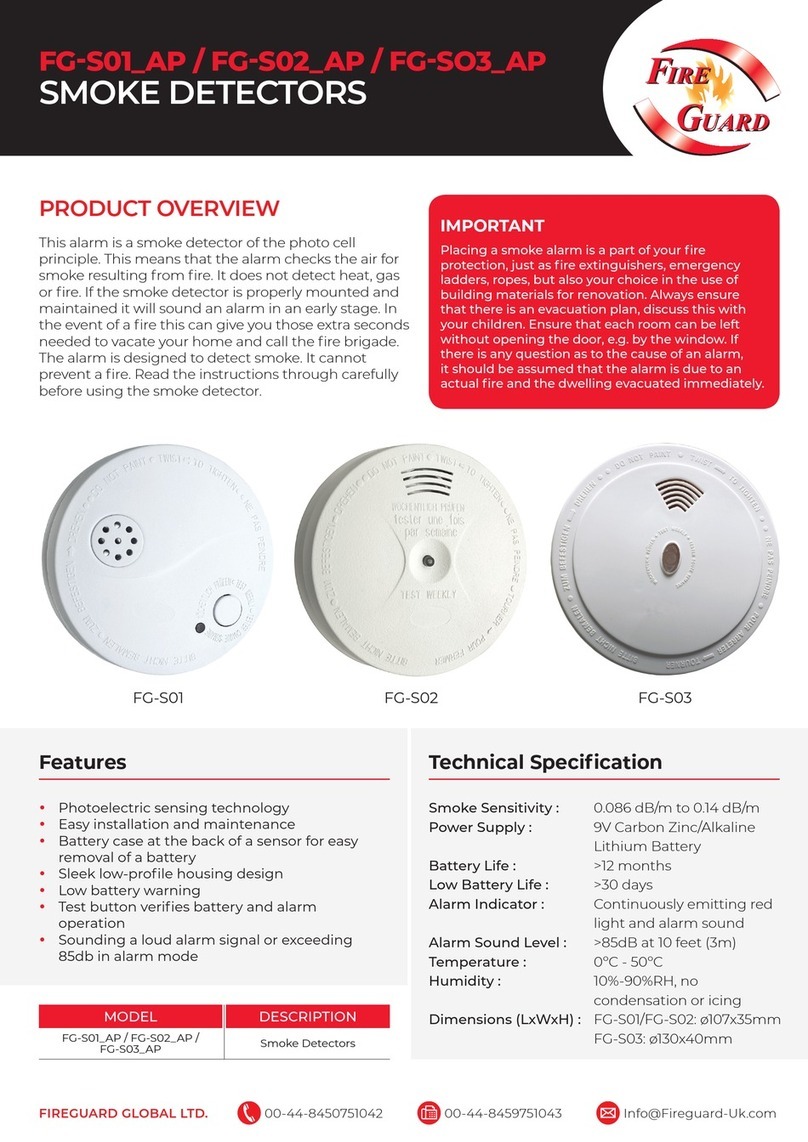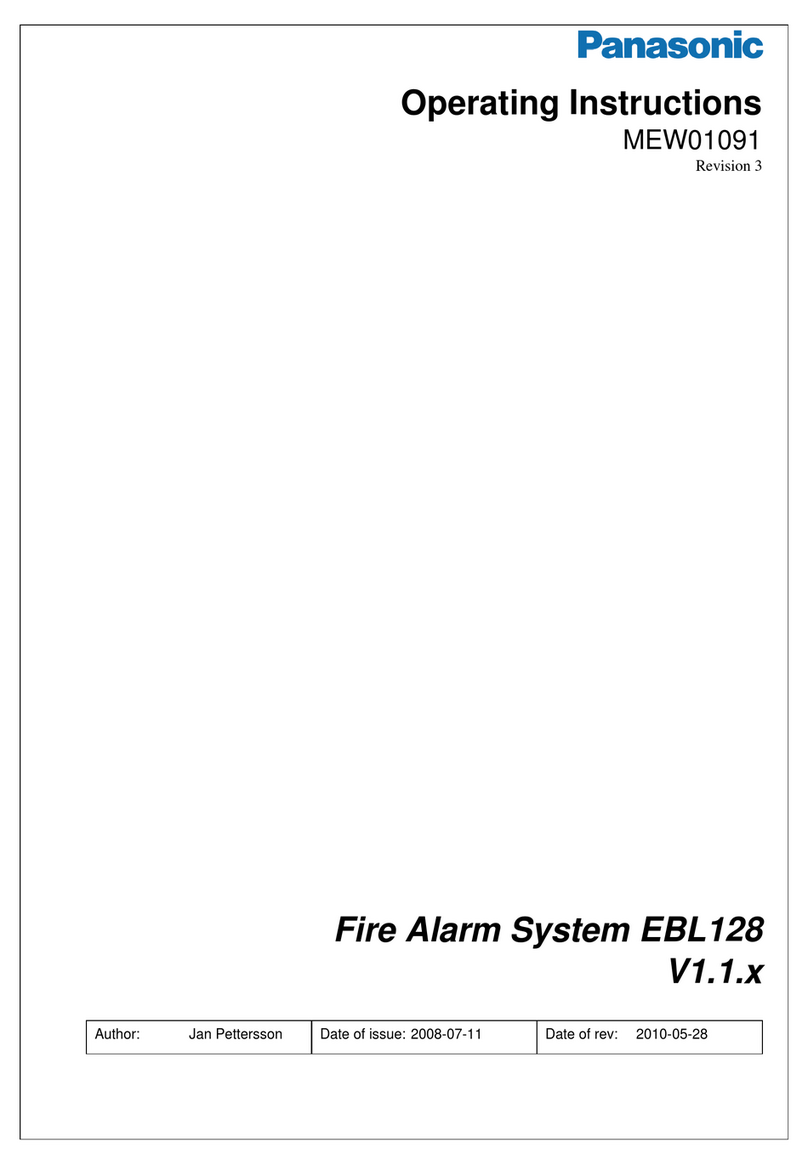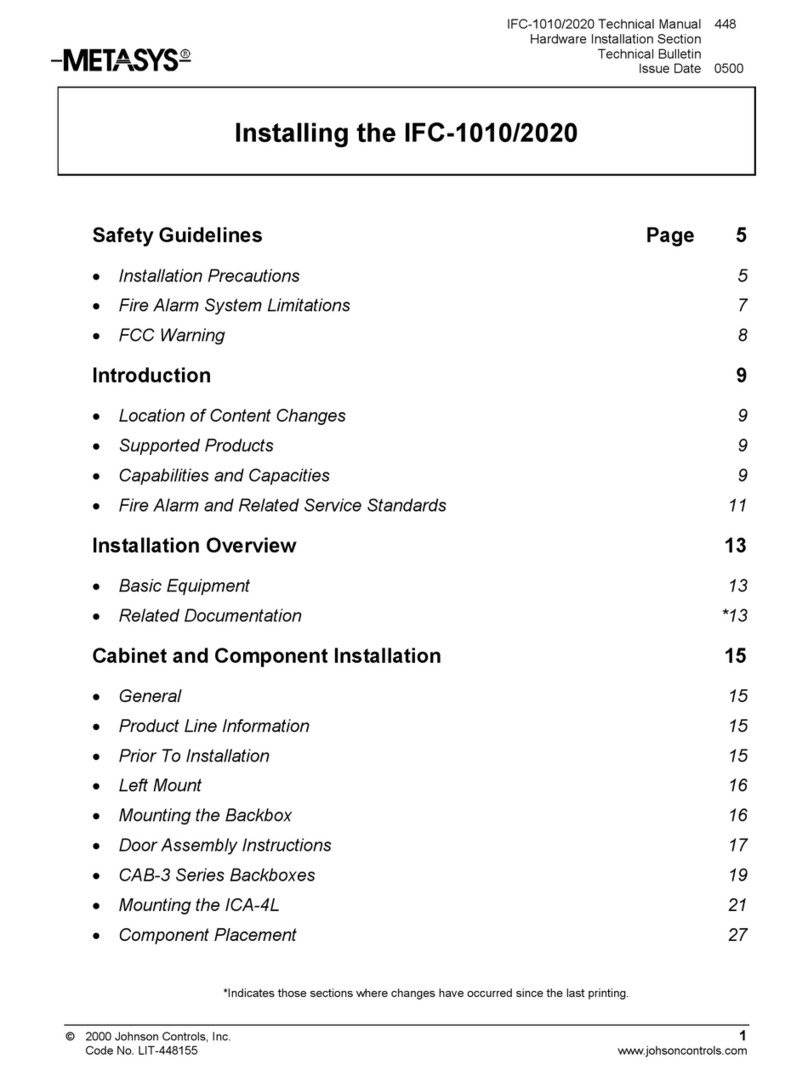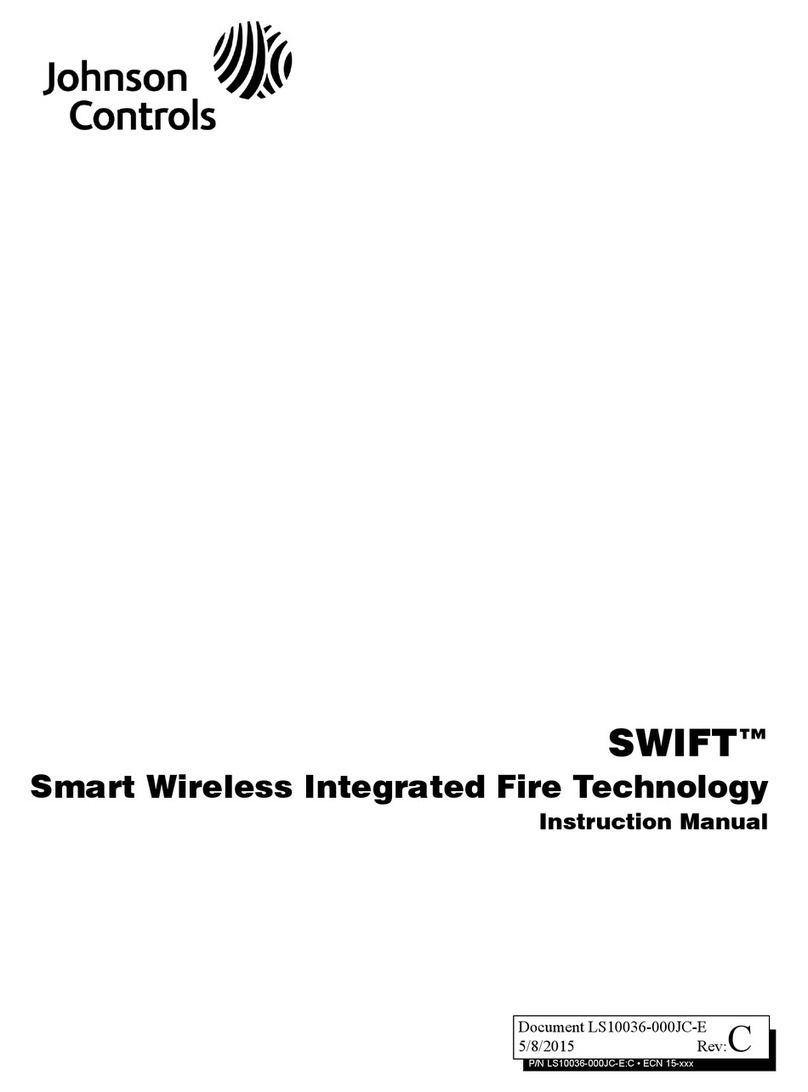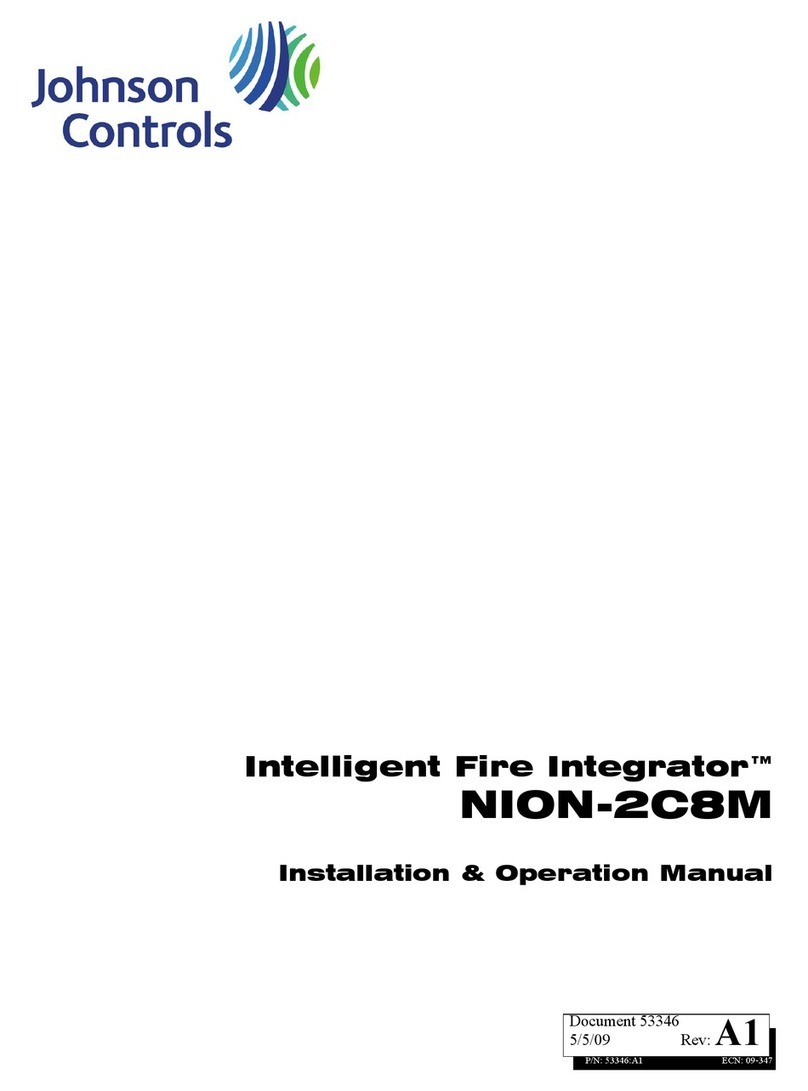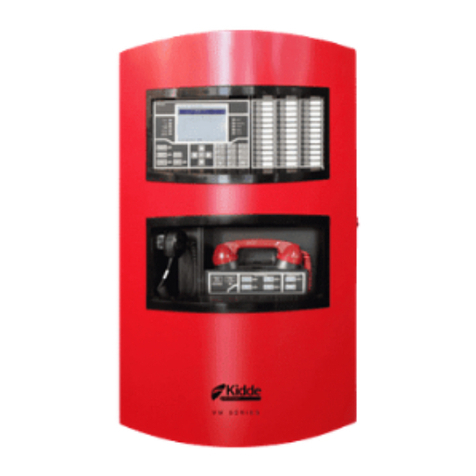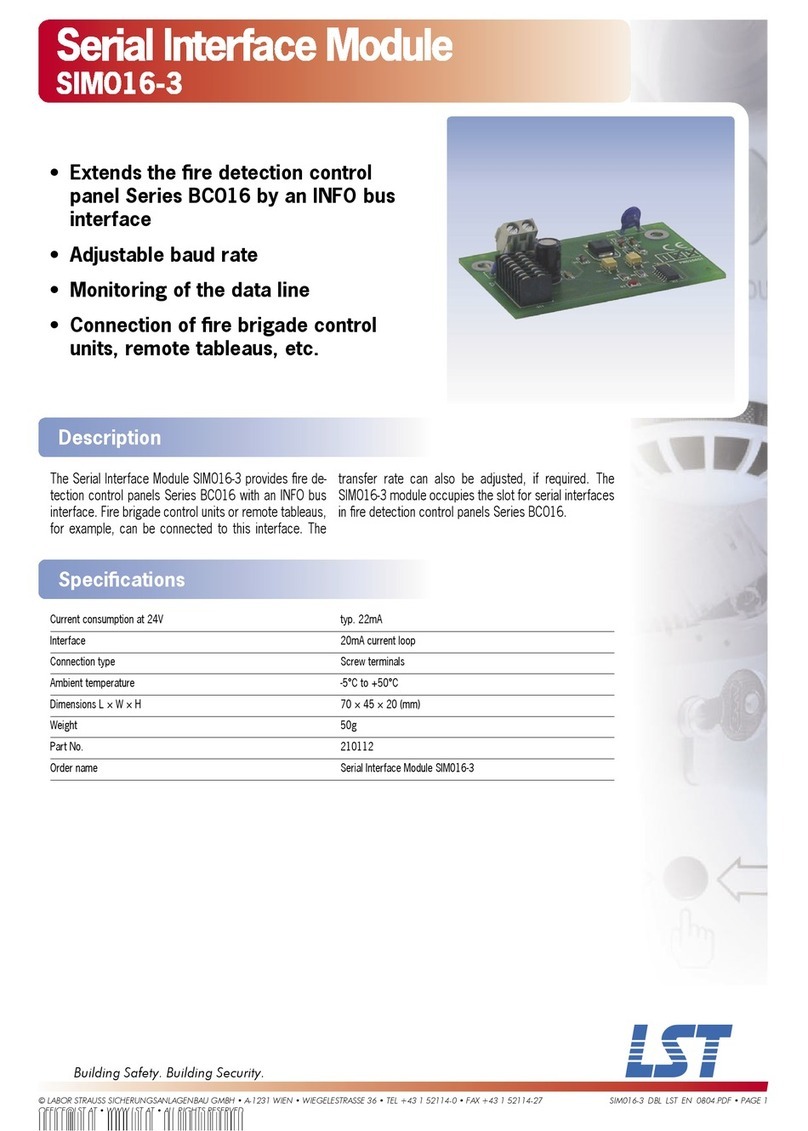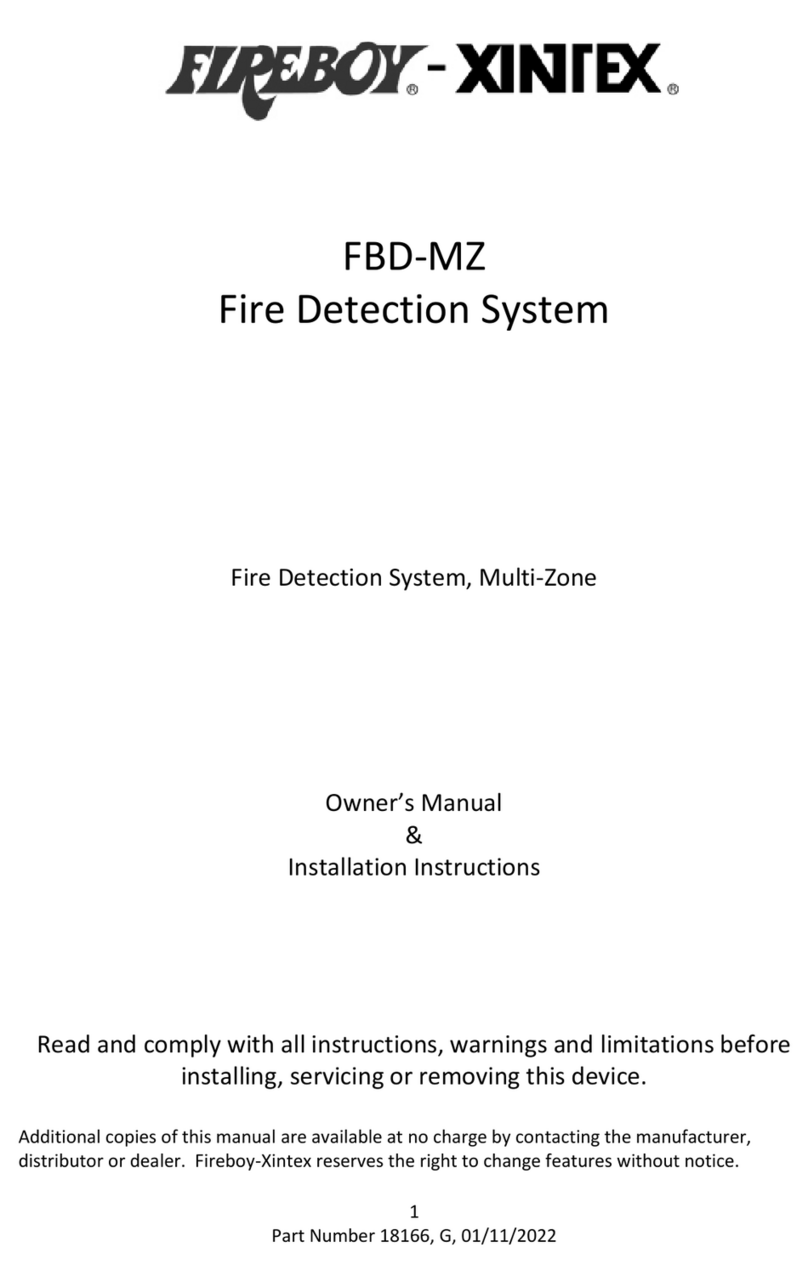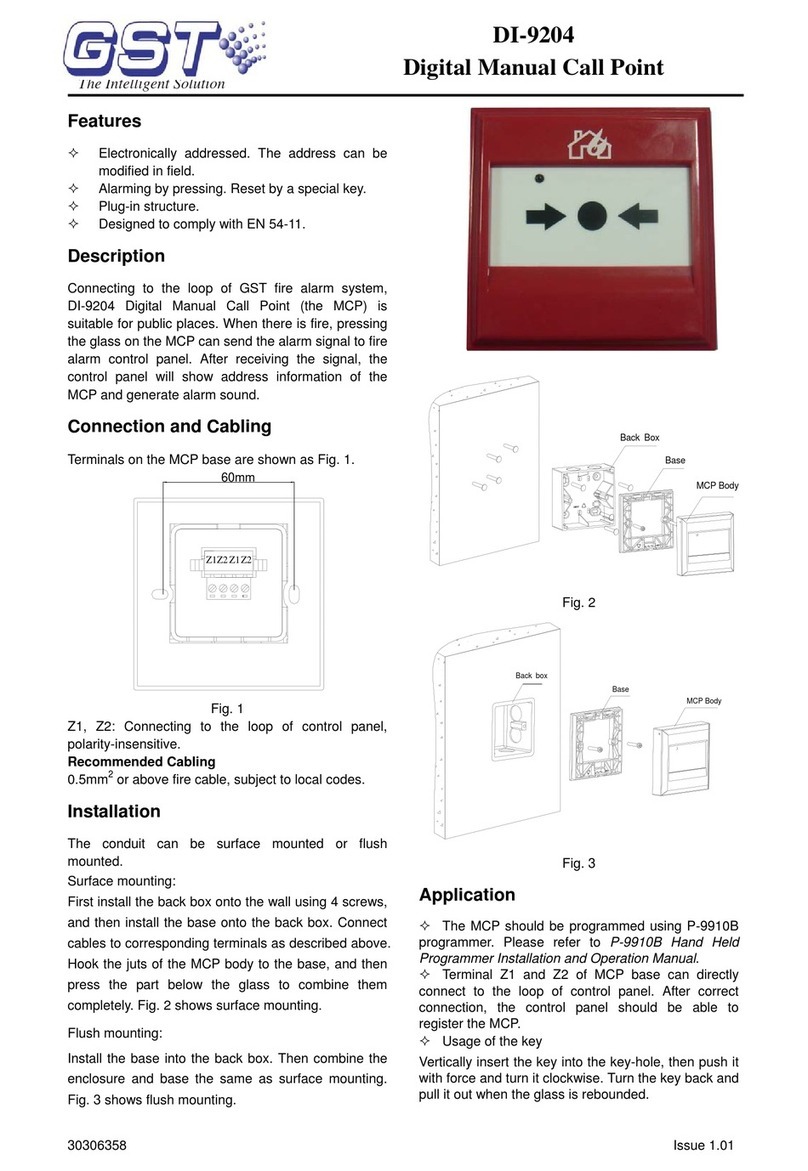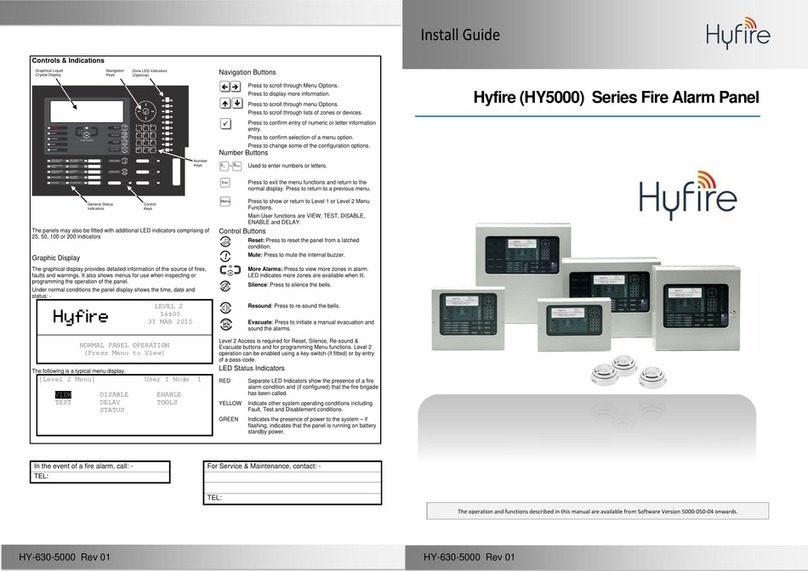
FIRECLASS Fire detection system Read the Installation Notes
Installation Guide Doc. version 2.0 6
2 Read the Installation Notes
There is a section of installation notes in the FireClass
FC700 series panels Product Application and Design
Information manual. Check these for information possi-
bly affecting your installation, such as the arrangement
of multiple slot cards.
3 Note Safety Warnings
4FC702/708/718 panels
The FireClass FC700 series FC702/708/718 range con-
sists of the following panels:
FC702S - Two loop FireClass panel
This panel can have two standard power loops or
one high power loop with a maximum of 250
addresses. It features a TFT touchscreen display
with 16 zonal LEDs. The panel has a compact hous-
ing and 5A PSU for 17AH batteries. The FC702S is a
networkable panel.
FC702D - Two loop FireClass panel
This panel can have two standard power loops or
one high power loop with a maximum of 250
addresses. It features a TFT touchscreen display
with 16 zonal LEDs. The panel has a designer hous-
ing and 5A PSU for 38AH batteries. The FC702D is a
networkable panel.
FC718D - Four to eight loop FireClass panel
This panel can have four standard power loops or
two high power loops expandable to eight standard
power or four high power loops with a maximum of
1000 addresses. It features a TFT display with 16
zonal LEDs. The panel has a designer housing and
5A PSU for 38AH batteries. The FC718D is a net-
workable panel.
FC708D - Four to eight loop FireClass panel
This panel can have four standard power loops or
two high power loops expandable to eight standard
power or four high power loops with a maximum of
1000 addresses. It features a TFT display with 80
zonal LEDs. The panel has a designer housing and
5A PSU for 38AH batteries. The FC708D is a net-
workable panel.
4.1 Mounting a FC702/708/718 panel to
the wall
After checking that the mounting location is suitable,
you attach the mounting plate of the unit to the wall,
then attach the panel to this plate.
1 Check the mounting location.
– The alarm system units are not weatherproof.
Check that the location is indoors, dry and free
from excessive dust.
– Determine the mounting positions and as a
double check, use the dimensions in Fig. 2 for a
FC702 panel and Fig. 3 for a FC708/FC718 panel.
2 Fix the mounting plate to the wall
– Hold the mounting plate up to the wall and mark
on the wall a position for the upper mounting
hole. Make sure that the plate is the right way up.
See the arrow pointing upwards on the mounting
plate. Refer to Fig. 1.
– Drill a hole to accept the supplied wall plug and
insert the plug.
– Fix the plate into the upper drill positions just
enough to allow you to mark drill positions on the
wall for the two lower holes.
– Move the mounting plate out of the way and drill
the two lower holes.
– Insert the wall plugs and fix the mounting plate to
the wall with the screws.
– Tighten all of the screws and check that the
mounting plate is secure.
3 Remove knockouts from the unit housings where
necessary, as required by the cabling runs.
– For example, loop wiring needs access at the top
of the panel.
– You will need to make provision for mains cables,
earth cables, DC power cables and battery cables,
for example.
– Fit the knocked out holes with suitable cable
glands. To maintain IP30 pass test status, use the
M20 cable gland with a locknut.
4 Hang and fix the panel on the mounting plate.
– Loosely screw the top two bolts on the mounting
plate already on the wall.
– Hang the panel on the loose screws and screw
the bottom two bolts. Refer to Fig. 4 or Fig. 6.
DANGER
The FireClass FC700 series control panel
contains high voltages, producing a
danger of death or serious injury while
working on the panel.
Note the dangerous voltage warning
sticker on the PSU.
Follow all steps and note all warnings in
this guide relating to electrical safety
and earthing.
Note
Ensure that the wall fixings are strong
enough to support the weight of the mount-
ing plate and panel. Note that the battery size
has an impact on the housing weight.


